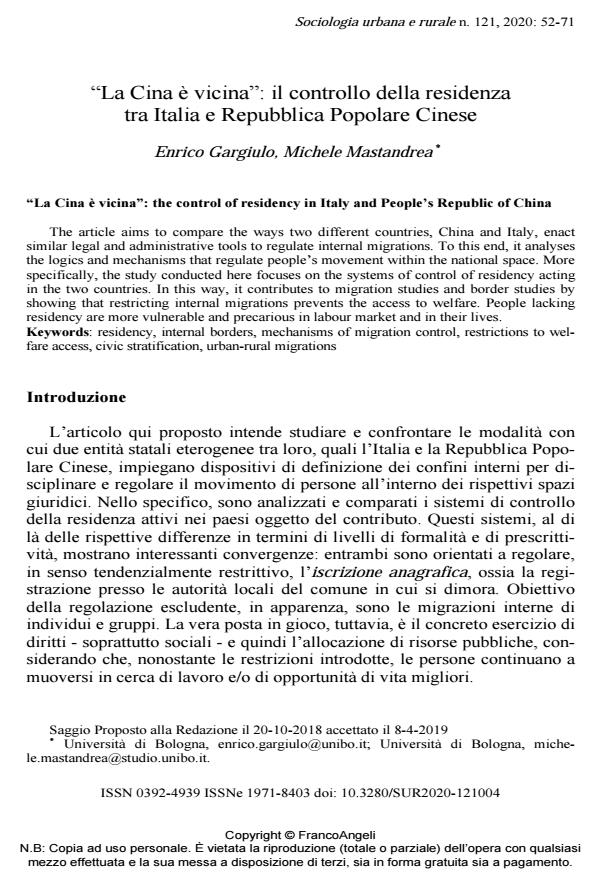"La Cina è vicina": the control of residency in Italy and People’s Republic of China
Journal title SOCIOLOGIA URBANA E RURALE
Author/s Enrico Gargiulo, Michele Mastandrea
Publishing Year 2020 Issue 2020/121
Language Italian Pages 20 P. 52-71 File size 196 KB
DOI 10.3280/SUR2020-121004
DOI is like a bar code for intellectual property: to have more infomation
click here
Below, you can see the article first page
If you want to buy this article in PDF format, you can do it, following the instructions to buy download credits

FrancoAngeli is member of Publishers International Linking Association, Inc (PILA), a not-for-profit association which run the CrossRef service enabling links to and from online scholarly content.
The article aims to compare the ways two different countries, China and Italy, enact similar legal and administrative tools to regulate internal migrations. To this end, it analyses the logics and mechanisms that regulate people’s movement within the national space. More specifically, the study conducted here focuses on the systems of control of residency acting in the two countries. In this way, it contributes to migration studies and border studies by showing that restricting internal migrations prevents the access to welfare. People lacking residency are more vulnerable and precarious in labour market and in their lives.
Keywords: Residency, internal borders, mechanisms of migration control, restrictions to welfare access, civic stratification, urban-rural migrations
Enrico Gargiulo, Michele Mastandrea, "La Cina è vicina": il controllo della residenza tra Italia e Repubblica Popolare Cinese in "SOCIOLOGIA URBANA E RURALE" 121/2020, pp 52-71, DOI: 10.3280/SUR2020-121004